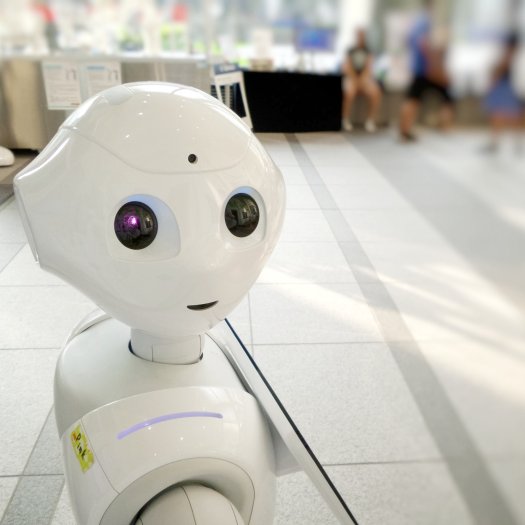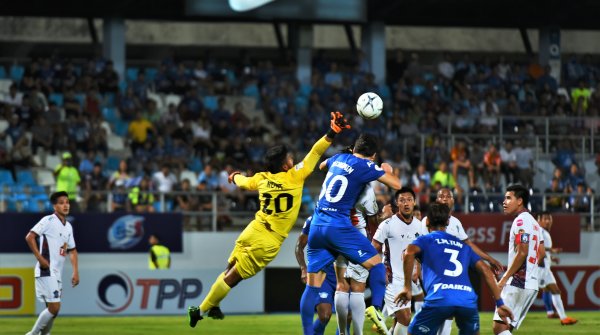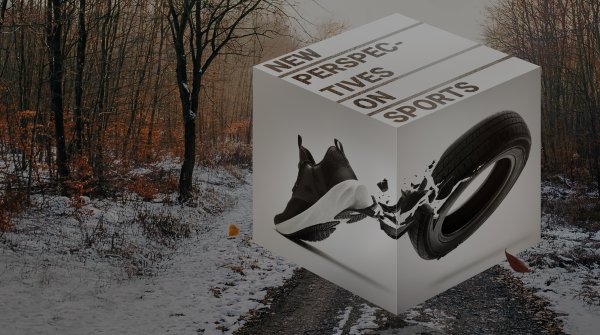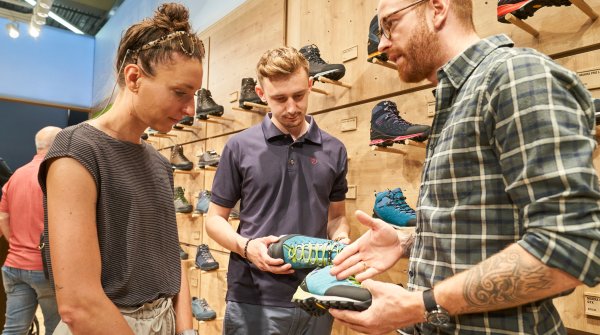CUE is the name of the basketball robot whose appearance at the USA's game against France caused astonishment around the world. During the halftime show, the CUE developed by Toyota entered the court. The 1.86 metre high CUE was allowed to throw from two distances. Not only did he hit the basket with precision. His throws also followed a perfect trajectory. It thus provided an impression of how far robot technology has come. The high-tech device uses sensors mounted on its torso to calculate the distance, trajectory and strength of a throw. The motorized arms and knees help it to take the swing. Behind the impressive presentation, however, is an old adage of us humanoids: Practice makes perfect. The knowledge of over 200,000 attempts was behind the performance in Tokyo. Some people think that CUE with its perfection is already stronger than real basketball players, but until then there are still some development steps necessary. Because Cue can neither dribble nor jump. And his speed is still a long way from real basketball.
MIRAITOWA has a very different job description than CUE. Miraitova is one of two mascots at the Olympics. Where students used to be dressed in broodingly hot costumes to represent the respective mascot with somewhat silly movements on the tartan track and wave to the audience, Miraitova is much smarter. The 30-centimeter-tall robot can bob its feet in time to music. If someone comes up to him, he invites them to high five! and keeps his hand raised until his counterpart strikes. Even during the Corona pandemic, shaking hands becomes possible again. Friendly, too, is Miraitowa's paint job. Its paint job of white and blue squares is complemented with twinkling eyes - the small screens can also show hearts. The translation of Miraitowa means something like future and eternity - what a fitting name for the Olympic Games.
SOMEITY is the twin of Miraitova and has the same role, namely that of the lovable greeting-god-uncle. Someity is officially the mascot of the Paralympics. He is painted in pink and white, but is otherwise technically similar to his twin. With 20 joints, the mascot robot can manage a whole range of movements and also react to the other person with different facial expressions. The name is derived from the cherry blossom species Someiyoshino, but also plays on the English "so mighty," which translates to "so powerful." Graphically reminiscent of Japanese anime characters, Someity is said to carry a strength reminiscent of just such anime stories. Through his power, he is said to be able to talk to stones and the wind, and even move things he just looks at.
HSR has a comparatively technical name, it is the Human Support Robot. The task at the Olympic Games would actually have been to escort the spectators in the Olympic stadium to their seats or even to serve light meals. Because of the spectator ban due to the Corona pandemic, this is now not possible. But for this, the HSR has already had a very special moment in the run-up to the Olympics. During the torch relay, the robot carried the torch for Akihito Goto, a runner of small stature - with a beaming smile, Goto ran his leg alongside the robot. In 2007, the Japanese had himself pushed the idea of creating a technical remedy for people with disabilities at the manufacturer Toyota. The robot, which weighed 37 kilos and was a good metre tall, obviously did just what Goto wanted. Robots had already been used as torch runners before - Japan's neighboring country South Korea had also used the Winter Games in Pyeongchang to demonstrate its technical skills.
FSR has also been given a purely technical name. The abbreviation stands for Field Event Support Robot or Field Support Robot. The FSR is quasi the nimble helper of the officials. It collects the spears during the javelin throw and the hammers during the hammer throw. Afterwards it looks for the shortest way back to the material place and avoids possible disturbances of parallel running competitions. This is to save time and personnel. Unlike the other robots on our list, the FSR is more of a vehicle, rolling around the competition area on four wheels like a shrunken car.
T-HR3 really makes it almost sad that Toyota didn't indulge in a little more floweriness with the naming. Because this life-size, remote-controlled robot can virtually take on the role of a cheerleader or lead dancer without any suspicion of sexism. With its 32 joints, T-HR3 is very flexible and thus even suitable for gymnastics. By the way, the 3 stands for the third generation - Toyota obviously has a lot of faith in the basic concept of this humanoid robot and wants to develop it further. The current model is 1.54 metres tall, it has 32 joints and its battery has a range of almost 100 kilometres.
- ISPO awards
- Mountain sports
- Bike
- Design
- Retail
- Fitness
- Health
- ISPO Job Market
- ISPO Munich
- ISPO Shanghai
- Running
- Brands
- Sustainability
- Olympia
- OutDoor
- Promotion
- Sports Business
- ISPO Textrends
- Triathlon
- Water sports
- Winter sports
- eSports
- SportsTech
- OutDoor by ISPO
- Heroes
- Transformation
- Sport Fashion
- Urban Culture
- Challenges of a CEO
- Trade fairs
- Sports
- Find the Balance
- Product reviews
- Newsletter Exclusive Area
- Magazine






